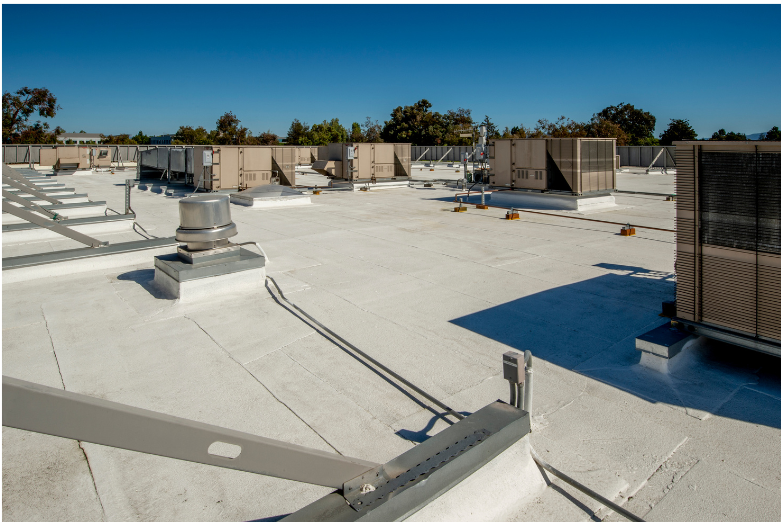Learn More About Energy-Efficient Commercial Roofing

In today’s environmentally conscious world, it’s hard to ignore the headlines that call for additional waste reduction platforms and responsible energy use. This trend is typically associated with practices like recycling, limiting the use of paper and plastic products, and taking advantage of solar technology.
However, this concept also applies to the roofing industry. While there aren’t many people who think about the “green” possibilities of commercial flat roof materials, savvy property owners may want to give this notion some thought. Commercial roofs can add more value to the property than just sheltering the contents in the building.
Local commercial roofing contractor Shamrock Roofing and Construction has compiled this quick guide to energy-efficient commercial roofing. It lists many of the benefits as well as some of the most popular energy-efficient materials on the market. Read on for more.
Why Consider an Energy-Efficient Roofing Platform?
As an entrepreneur and business owner, you may be more concerned with the company’s bottom line than the type of roof your building has. Cost savings is a good reason to consider commercial flat roof materials with energy-efficient properties. With an energy-efficient roof, you’ll reduce your electricity consumption, which in turn, lowers utility costs by as much as 15 percent. Also, consumers appreciate doing business with a company that demonstrates a vested interest in the local environment. When you increase the energy efficiency of your roof, you’re likely to gain a cadre of new fans as well as the appreciation and support of employees and tenants.
What Features Make a Roof Energy Efficient?
Energy-efficient roofing systems (like TPO and EPDM roofing and others) have several common characteristics. Primarily, these systems contain properties that make them highly reflective and able to redirect heat with ease. Certain commercial flat roof materials are better at blocking or reflecting the sun than others. TPO and EPDM roofing is generally designed to reflect UV rays. Black tar and gravel roofs are the worst at doing this. Wood and metal roofs fall somewhere in the middle.
In addition, the color of the roof plays a significant role in energy efficiency. That’s why so many commercial roofs are white. Flat roofs are extremely exposed and take a beating under the hot sun. A white surface reflects much of the sun’s UV rays, keeping the interior of the building more comfortable and helping the A/C units run more efficiently.
What Are the Most Popular Roofing Materials?
Experts on commercial roofing in Des Moines have differing opinions on the most popular roofing materials when it comes to energy gains, but they can certainly agree on a few. Metal roofing, EPDM roofing, and thermoset (TPO) membranes are the most popular picks for commercial buildings.
For property owners who love the great outdoors, a green roof with a rooftop garden is also an option. The presence of grass, trees, and shrubs on the roof does even more for energy efficiency than roofing materials with reflective coatings. Rooftop gardens add usable living space too. They’re perfect for outdoor gatherings. Many new apartment buildings include rooftop gardens and outdoor spaces for gathering with friends and neighbors.
Ready to Save on Energy Costs? Shamrock Roofing Can Help!
If you’re looking for a team of professionals well-versed in commercial roofing in Des Moines, you’ve come to the right place. There’s no need to waste time searching for a “professional roofer near me.” Shamrock Roofing and Construction is at your service! With over forty years in the industry, we know commercial roofing. We can advise you on the many ways to make your commercial roof more energy efficient and help you cut back on your utility costs.
Contact us today to schedule a commercial roof evaluation. Your bottom line will thank you!